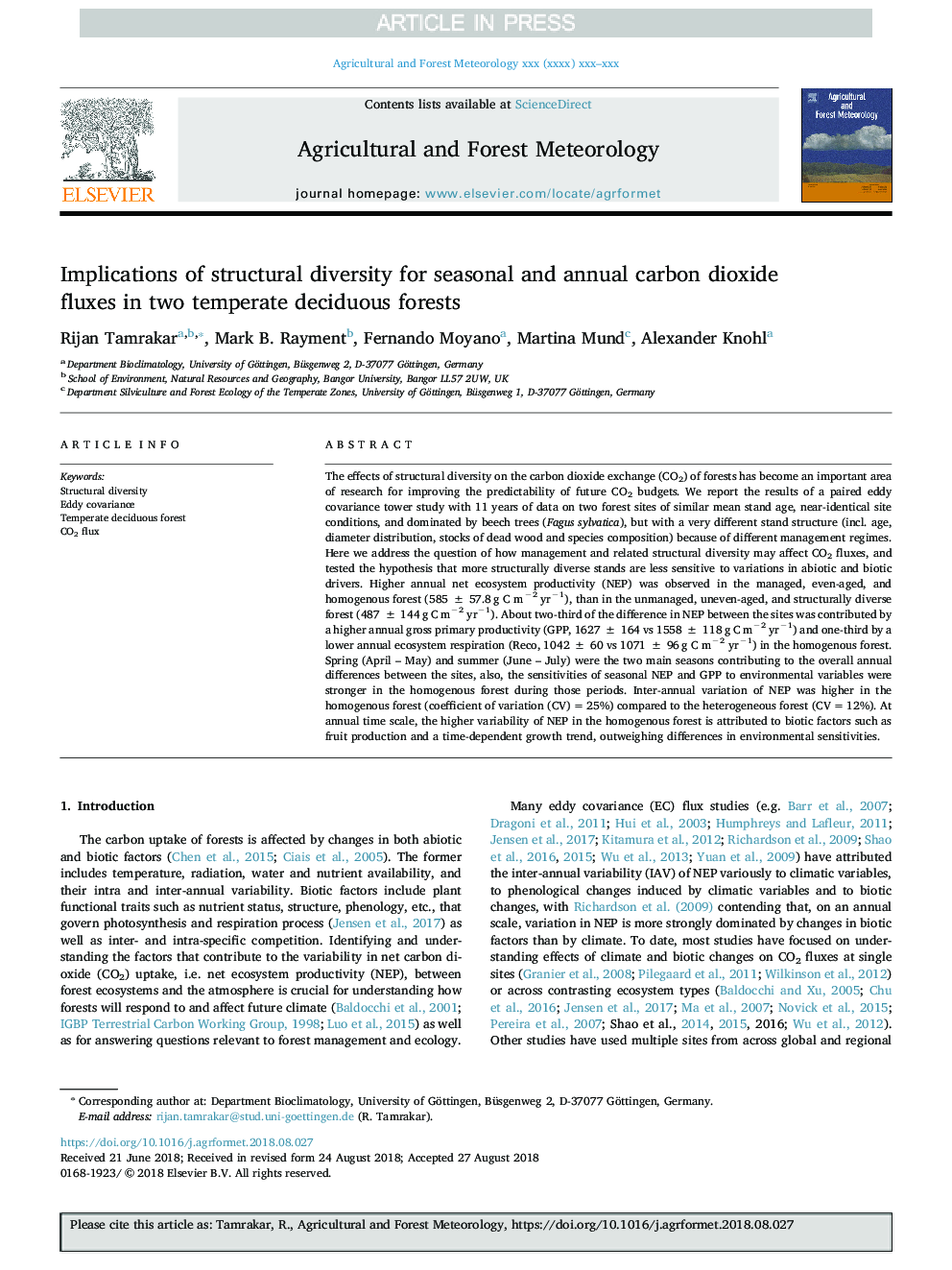| کد مقاله | کد نشریه | سال انتشار | مقاله انگلیسی | نسخه تمام متن |
|---|---|---|---|---|
| 11533846 | 1420842 | 2018 | 12 صفحه PDF | دانلود رایگان |
عنوان انگلیسی مقاله ISI
Implications of structural diversity for seasonal and annual carbon dioxide fluxes in two temperate deciduous forests
ترجمه فارسی عنوان
تأثیر تنوع ساختاری برای فلوئور دی اکسید کربن فصلی و سالانه در دو جنگل بادرمان معتدل
دانلود مقاله + سفارش ترجمه
دانلود مقاله ISI انگلیسی
رایگان برای ایرانیان
کلمات کلیدی
موضوعات مرتبط
مهندسی و علوم پایه
علوم زمین و سیارات
علم هواشناسی
چکیده انگلیسی
The effects of structural diversity on the carbon dioxide exchange (CO2) of forests has become an important area of research for improving the predictability of future CO2 budgets. We report the results of a paired eddy covariance tower study with 11 years of data on two forest sites of similar mean stand age, near-identical site conditions, and dominated by beech trees (Fagus sylvatica), but with a very different stand structure (incl. age, diameter distribution, stocks of dead wood and species composition) because of different management regimes. Here we address the question of how management and related structural diversity may affect CO2 fluxes, and tested the hypothesis that more structurally diverse stands are less sensitive to variations in abiotic and biotic drivers. Higher annual net ecosystem productivity (NEP) was observed in the managed, even-aged, and homogenous forest (585â±â57.8âg C mâ2 yrâ1), than in the unmanaged, uneven-aged, and structurally diverse forest (487â±â144âg C mâ2 yrâ1). About two-third of the difference in NEP between the sites was contributed by a higher annual gross primary productivity (GPP, 1627â±â164 vs 1558â±â118âg C mâ2 yrâ1) and one-third by a lower annual ecosystem respiration (Reco, 1042â±â60 vs 1071â±â96âg C mâ2 yrâ1) in the homogenous forest. Spring (April - May) and summer (June - July) were the two main seasons contributing to the overall annual differences between the sites, also, the sensitivities of seasonal NEP and GPP to environmental variables were stronger in the homogenous forest during those periods. Inter-annual variation of NEP was higher in the homogenous forest (coefficient of variation (CV)â=â25%) compared to the heterogeneous forest (CVâ=â12%). At annual time scale, the higher variability of NEP in the homogenous forest is attributed to biotic factors such as fruit production and a time-dependent growth trend, outweighing differences in environmental sensitivities.
ناشر
Database: Elsevier - ScienceDirect (ساینس دایرکت)
Journal: Agricultural and Forest Meteorology - Volume 263, 15 December 2018, Pages 465-476
Journal: Agricultural and Forest Meteorology - Volume 263, 15 December 2018, Pages 465-476
نویسندگان
Rijan Tamrakar, Mark B. Rayment, Fernando Moyano, Martina Mund, Alexander Knohl,
